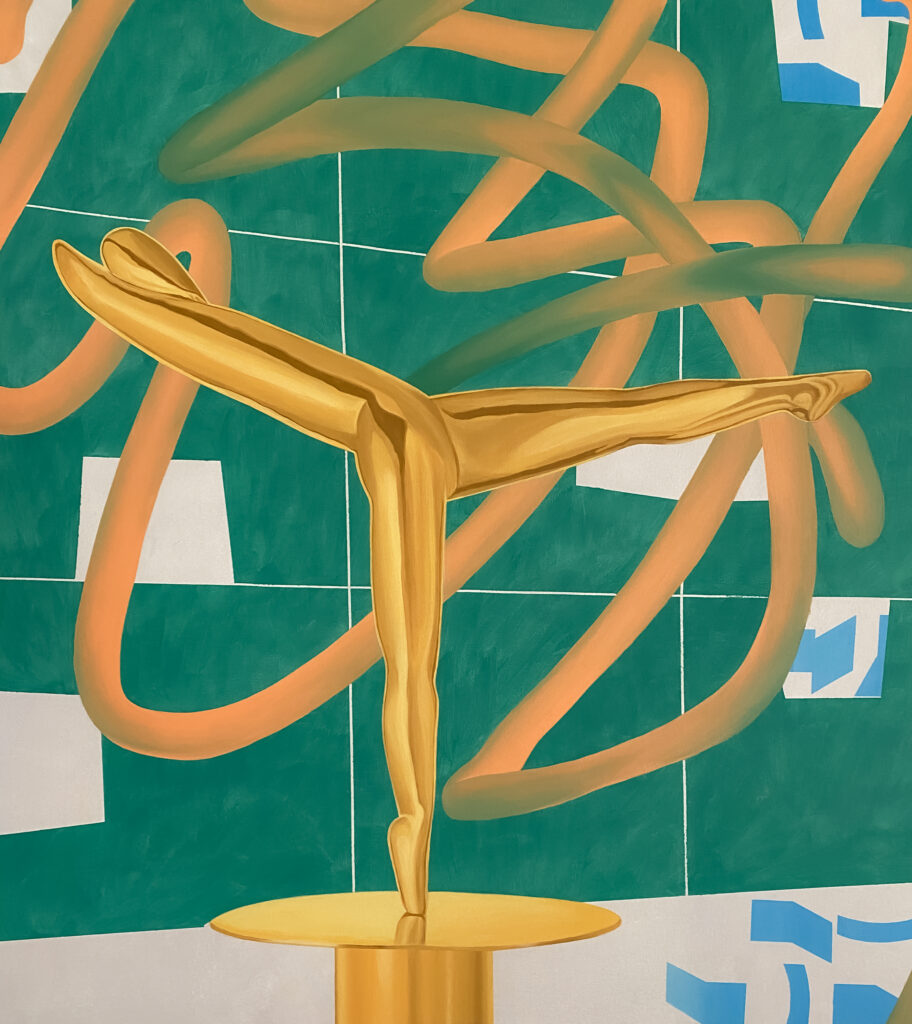Land of the future – Anti-democratic ballet 1 2023 – Acrylic on canvas – 100 x 100 cm

The first painting in the Land of the Future series is from mid-2020. At that moment, thinking about the future seemed a powerful emotional tool to get through the following years. I started by reading the book by Stefan Zweig: Brazil, Land of the Future. I read it in German as I found it exotic to read in the original about Brazil in 1941. You see: the Austrian who fled the war to Brazil, wrote a boastful book, and died there – an exotic. Anyway, I had time. Then was the beginning of the Coronavirus lockdown in Berlin, where I live. I worked with different sources, from the news to YouTube Live, looking inside the government buildings and the actions that took place there.
In which room at the Planalto Palace did Jair Bolsonaro meet with the neo-Nazi parliamentarian Beatrix von Storch? Did she sit in Sergio Rodrigues’ Beto armchair? Did they plan the expansion of the far right under Djanira’s beach landscape? These are examples of questions that provoke my work.
In the paintings, created essentially with appropriations, I propose to assume works of art, artifacts, handicrafts, antiques, tapestries, furniture, and the architecture of the palaces as eyewitnesses. This witness collection was there in the first days of the new modern capital; it saw the sad years of the military dictatorship and the hopeful ones of re-democratization. Over the past four years, it has witnessed the unimaginable. With the Land of the Future series, I offer sensitive records of this history to start a conversation, to think together, and to hold on to the public memory.
Land of the future
The book Brazil, Land of the future, published in 1941 by the Austrian author Stefan Zweig, is a travel guide. The work describes Brazil as an idyllic place with extraordinary civilizing potential.
Despite its sales success, the book was devious as the country was currently under a dictatorship. Nevertheless, Brazil, Land of the future became a national epithet. It was as a slogan widely explored by the government at the time. The new international aesthetics would conveniently match the government’s desire to promote the country’s progress and modernization.
A characteristic of the history of Brazilian culture in the 20th century is the appropriation of Modern avant-gardes by artists and the consequent consolidation of Modernist Brazilianness as one of the foundations of national identity.
With the series Land of the future, I aim to contrast the Modern project in Brazil – its promises of the future and its relationship with politics – with the present context.

